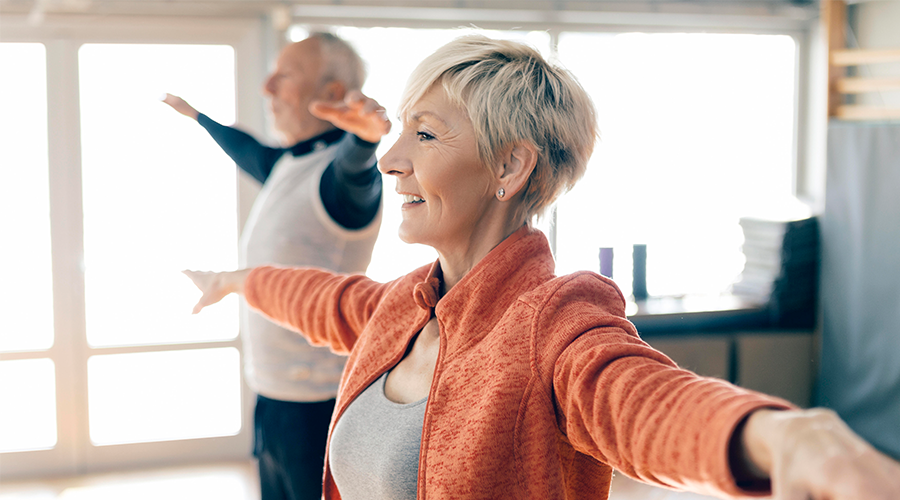If you’ve reached retirement age, statistics say you’re at a higher risk for falling.
According to the National Council on Aging and the Centers for Disease Control and Prevention, one in four Americans age 65 and older falls each year.
Fortunately, falling isn’t inevitable.
“By using fall prevention techniques, people can reduce the risk for serious health problems or long-term disability,” says Haylee Bruns, a physical therapy tech at Good Samaritan Society – Bloomfield in Bloomfield, Nebraska.
Exercise is a key technique. Simple strength and resistance training exercises can be easily incorporated into your daily routine to decrease your risk and keep you physically active.
“Regular exercise helps keep our muscles working together, which is pertinent to balance and coordination activities. Exercise helps keep us mobile and keeps our muscles working and from getting deconditioned. If you get deconditioned, then you’re weak and at a more increased risk for falling,” Haylee says.
Consult with your doctor
Before beginning an exercise routine, it’s important to visit with your primary care provider.
“Our number one recommendation is always safety. Make sure you’re healthy enough to be able to do an exercise program at home,” says Haylee.
If you’re unable to start exercising and are worried about falling, you can talk with your doctor about physical therapy and ask if they can prescribe it.
You can also attend a fall prevention clinic to determine your risk. Fall prevention clinics are held at several Good Samaritan Society locations each year.
Home exercises
If your doctor clears you to exercise, the physical therapy team at Good Samaritan Society – Bloomfield recommends “counter” exercises.
“Individuals can stand at their counter so that they feel a little safer and have something to hold on to,” says Haylee.
She says to focus on doing things that challenge your balance. One exercise she recommends is standing with your feet together for a narrow base of support and then standing on each leg for a few seconds.
Doing some head turns and walking sideways are other ways that work on balance and help prevent falls.
Haylee recommends these additional exercises:
- Basic sit-to-stand. Use a chair with arms or without. Sit and then stand up from the chair while trying not to use your hands. Once standing, put your feet together and shake your head “no” to help challenge your vestibular systems
- Tandem stance. Use a counter or chair to hold onto while you put one foot directly in front of the other. If you’re not able to do this, modify the move and do a semi-tandem stance where your foot is somewhat in front of the other, but not directly.
- Side kicks. Stand in front of a counter or a chair and kick your leg to the side alternating legs.
- Leg lift. Stand at a chair and put one leg slightly backward at about a 30-degree angle and hold for a few seconds. Then do the same thing with the other leg.
- Standing march. March in place for 30 seconds.
There are also exercise routines you can find online. Reliable sources include Silver Sneakers and AARP.
Physical therapy can help
Those who are referred to physical therapy get an initial baseline of where they are at with muscle strength and any weakness.
“We will notice if a hip is weaker than the other and we can work on that if they have a limp,” Haylee says. “There are a lot of different balance exercises a person can do. We have parallel bars so there are bars on both sides of the patient if they aren’t as confident or we have one bar that patients can hold on to when doing different walking exercises.
“The big thing is that we don’t give the same exercise prescription for every person. They all have their own, individual program.”



